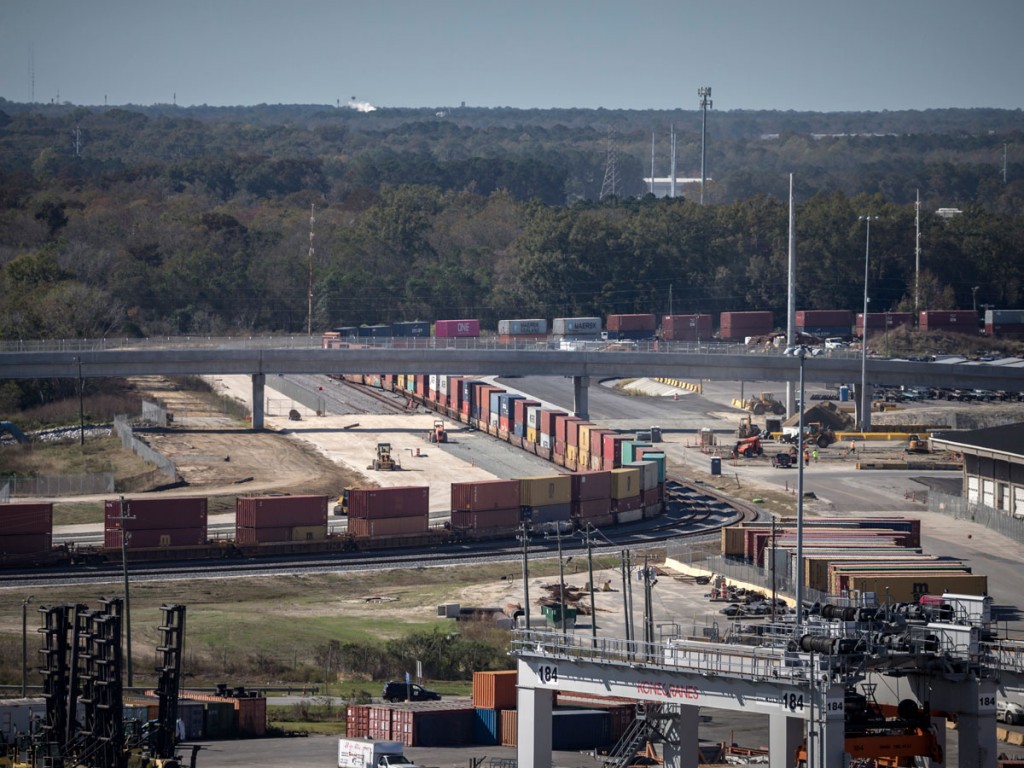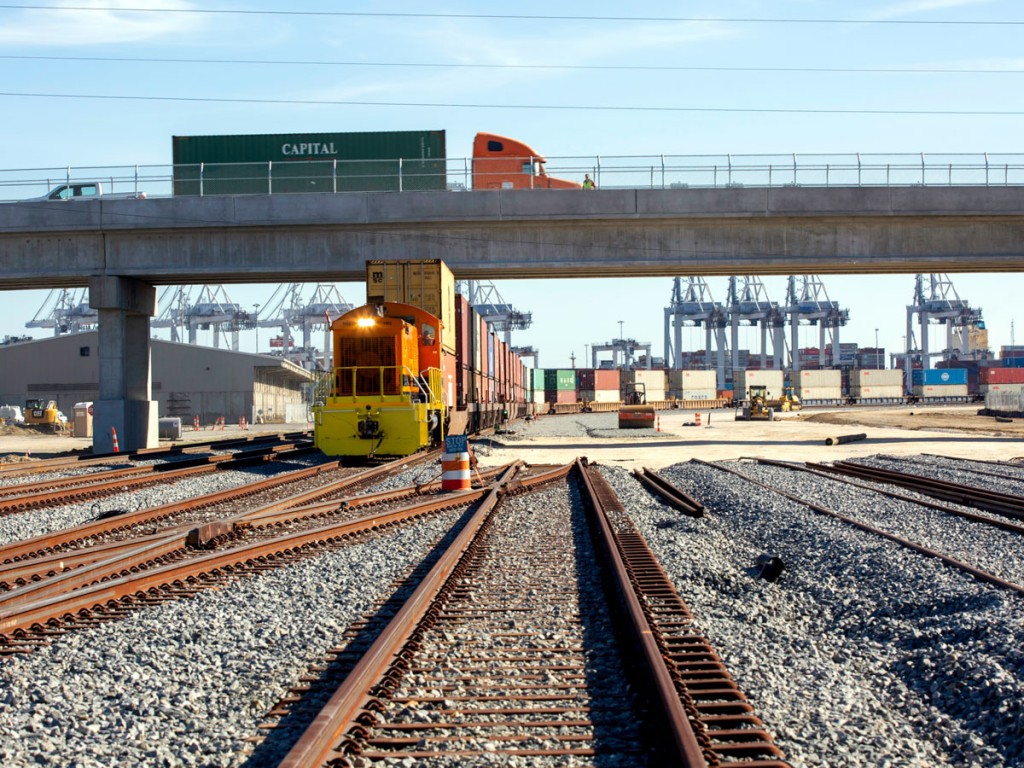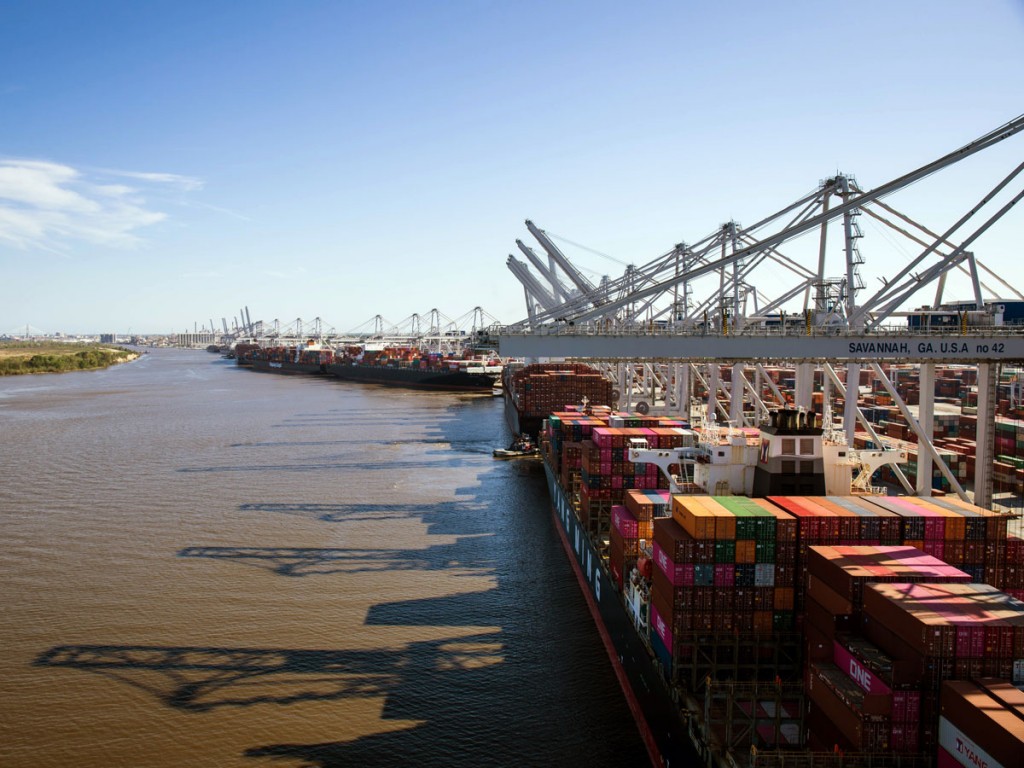
Now more than three-quarters completed, the GPA’s $220 million, 85-acre Mason Mega Rail Terminal, which began initial operations in late fall 2020, is expediting efficient links between Savannah’s busier-than-ever containership berths and such key markets as Memphis and Chicago via CSX and Norfolk Southern rail services with double-stacked containers.
“When complete, Mason Mega Rail Terminal will not only double our rail lift capacity to 2 million TEUs [20-foot-equivalent container units] per year, it will increase our reach into the Heartland with more frequent, direct service and unmatched reliability,” said Griff Lynch, the GPA’s executive director.
Indeed, the Mason Mega Rail Terminal is coming online none too soon. Trailing only Los Angeles/Long Beach and New York/New Jersey among the nation’s top container gateways, the Port of Savannah saw record throughput in November, the latest month with reported figures, breaking prior monthly highs established in August and October, even amidst a global pandemic.
The Southeast’s No. 1 container hub reached a volume of 464,804 TEUs in November, up 28 percent from November 2019, setting an all-time high for any month, eclipsing the 464,095 TEUs handled in October, which itself bested the 441,600 TEUs moved last August.
“To have achieved all-time record volumes in three of the last five months is a tribute to the hard work and collaboration between GPA and our partners throughout the supply chain,” Lynch said. “The progress we have already made on the Mason Mega Rail has delivered significant capacity increases and will further ensure Savannah’s role as the third-busiest container gateway in the nation.”
No partners are more important to the successful effort than CSX and Norfolk Southern, the respective Chatham and Mason rail yards of which are now linked at Garden City Terminal by newly installed tracks in the formation of the Mason Mega Rail facility.
The addition of more than 18 miles of new track – taking the total of on-terminal track to 34 miles – boosts storage capacity on the terminal by 35 percent and allows the GPA to build more unit trains of nearly 10,000 feet in length for both of the Class I railroads just 1,500 or fewer yards from docks at Garden City Terminal, which, at 1,200 acres, is the largest single-terminal container facility of its kind in North America. Not surprisingly, the completed Mason Mega Rail installation is to be the largest on-dock intermodal rail facility at any North American port.

Added intermodal capacity opens new inland markets while enhancing competitive reliability in serving destinations already reached by 27 trains departing the Port of Savannah on a weekly basis. For example, the GPA has stepped up marketing of dual rail services into the Midwest, providing customers with greater price competitiveness and scheduling flexibility.
GPA officials point to collaborations with rail providers, ocean carriers and stevedores, as well as strategic shifts in staffing, equipment and container yard deployment, in achievement of dramatic gains in efficient movement of intermodal containers, with the typical time from import cargo arrival to rail departure slashed to 24 hours from 72 hours.
Integral to this accomplishment has been the use of rail-mounted gantries, or RMGs, which each span nine tracks to facilitate efficient movement of containers from jockey trucks to trains. Terminal chassis are parked perpendicular to the rail lines, and RMG operators rotate the containers as they move them to and from train and truck.
The facility’s third RMG is now being assembled on the terminal, to be commissioned in February, and, by the end of 2021, when all bundles of track are slated to be operational, a total of six RMGs are to be in place at Mason Mega Rail.
The Mason Mega Rail Terminal is a critical piece in the overall GPA initiative to meet burgeoning cargo demands, building upon such competitive advantages as the Port of Savannah’s position as first port of call for many ocean carrier services transiting the expanded Panama Canal.

The GPA has increased its Garden City ship-to-shore crane contingent to 34, including some of the tallest such units on the U.S. East Coast, and is proceeding with renovation and 145-acre expansion of its container yard.
With megacontainerships with capacities of as many as 15,000 TEUs being increasingly deployed by ocean carriers, the ability to expedite considerable volumes of containers via rail becomes all the more important.
To further accommodate larger vessels, the $1 billion Savannah Harbor Expansion Project is moving toward late 2021 completion, to bring entire channel depth to 47 feet from 42 feet. Also, the GPA is advancing a new Savannah Container Terminal to be built on a 400-acre site on Hutchison Island along the Savannah River channel, and longer-term plans call for further deepwater containerport development.



